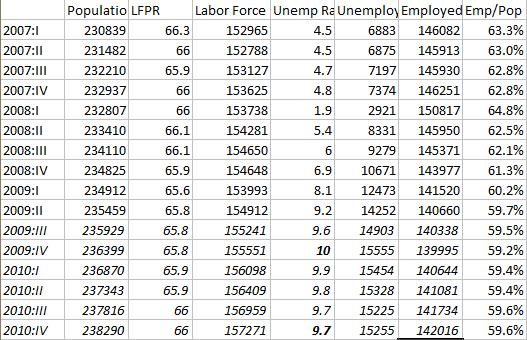King Banian, my favorite economics professor from St. Cloud State University, ran with the latest Office of Management and Budget projections for 2010 employment, which includes a 2010 fourth-quarter unemployment rate of 9.7%, and put together a quick-and-dirty spreadsheet (Excel 2007; those of you with Excel 2003 will either need a conversion tool from Microsoft to open or will want my Excel 2003 copy) to gauge what the projections actually mean. For those of you who can’t open Excel files, here’s a screencap of the spreadsheet:

Not only do the employment rolls drop by 1.96 million between the 4th quarter of 2008 and the 4th quarter of 2010, but the unemployment rolls increase by 4.59 million over the same 2 years. This is If you want percentage terms, employment rolls would drop 1.36%, while unemployment rolls would go up 42.96%.
That does assume that the Labor Force Participation Rate would bounce back to 66.0% from the current 65.8% and the 2009 first quarter 65.6%, which means those retiring, those without work for so long that they no longer count as “unemployed”, and others who are not part of the labor force would not increase as rapidly as the rest of the population. If the LFPR were not to bounce back as much, the employment roll drop would be even larger.